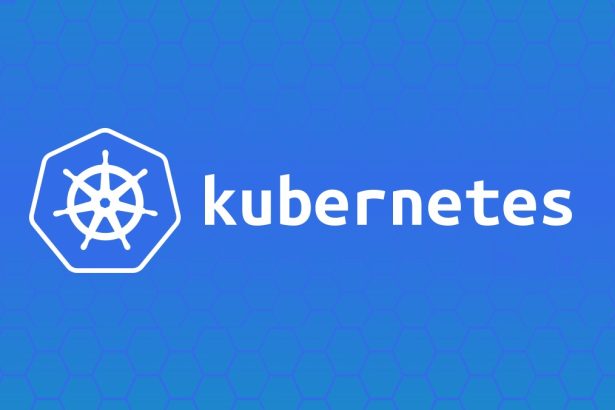Kubernetes, or K8s, has become an essential tool for managing containerized applications in the IT world. Whether you’re a developer, system administrator, or cloud enthusiast, understanding Kubernetes is a must in 2025. It offers scalability, efficiency, and simplicity for running software in distributed environments, making it pivotal to modern DevOps workflows.
If you’ve always wanted a quick yet comprehensive introduction to Kubernetes, this 60-minute crash course is tailor-made for you. We’ll cover the core concepts you need to know, walkthrough key features with practical examples, and provide you with actionable steps to start your Kubernetes learning today.
Table of Contents
1. What is Kubernetes, and Why is It Important?
Kubernetes (commonly abbreviated as K8s) is an open-source platform for managing containerized applications and their environments. Originally developed by Google, it is now maintained by the Cloud Native Computing Foundation (CNCF). Kubernetes automates tasks such as software deployment, scaling, and management, making it a core tool for modern cloud-native development.
Why Kubernetes is Crucial in 2025:
- Scalability: Automatically adjusts application resources to match traffic and demand.
- Cross-Platform Support: Works seamlessly across public clouds (AWS, Azure, GCP) and on-premises data centers.
- Fault Tolerance: Ensures high availability through automatic failover and self-healing applications.
- Speed: Accelerates software development and deployment cycles.
Whether you’re working on a single-node environment or deploying workloads across multiple clusters, Kubernetes simplifies the process, saving time and effort.
2. Kubernetes Crash Course for Beginners (60 Minutes)
If you’re new to Kubernetes, this crash course will help you grasp the essential building blocks in under an hour. Let’s break it down step by step.
1. Containers and Kubernetes
Time Estimate: 10 Minutes
Kubernetes is built to manage containers, which are lightweight, portable packages containing all the code and dependencies needed to run an application. Tools like Docker help create and manage containers, but Kubernetes takes it a step further by enabling you to orchestrate (manage) these containers in scalable production environments.
Key Concept:
A container platform like Docker handles creating and running containers, while Kubernetes manages how those containers are deployed, scaled, and networked.
Takeaway:
Understand that Kubernetes doesn’t replace Docker—it enhances it by providing orchestration capabilities.
2. Pods
Time Estimate: 10 Minutes
A Pod is the smallest unit in the Kubernetes ecosystem. It represents one or more containers that share networking and storage resources. Multiple containers in a Pod communicate with each other using localhost.
Why Pods Matter:
Imagine a Pod as a wrapper around one or more containers that must operate together. For example, if your application has a frontend service and a logging service, they could live inside a single Pod.
Quick Facts:
- Each Pod gets its unique IP address.
- Pods are ephemeral—if they fail, Kubernetes will spin up replacements automatically.
3. Deployments
Time Estimate: 10 Minutes
A Deployment is a high-level abstraction that helps you manage Pods. It ensures that the desired number of replicas of a Pod are running at all times.
Deployment Features:
- Automatically rolls out new versions of your application (rolling updates).
- Rolls back changes if something goes wrong.
Use Deployments to maintain consistent application states in the cluster.
4. Services
Time Estimate: 10 Minutes
A Service is a way to expose your Pods to the external world (e.g., making your application accessible via the internet). Even though Pods are transient, Services ensure that users and external tools can reliably communicate with them.
Types of Services:
- ClusterIP: Exposes the service only within your cluster.
- NodePort: Exposes the service on a static port for external networking.
- LoadBalancer: Automatically provisions a cloud-based load balancer.
5. Scaling
Time Estimate: 20 Minutes
Kubernetes allows you to scale applications easily based on demand. This means you can dynamically add or remove Pods based on CPU usage, incoming traffic, or other metrics.
Horizontal Pod Autoscaler:
Kubernetes automatically increases or decreases the number of Pods based on real-time metrics.
Command to Scale Pods Manually:
kubectl scale deployment <deployment-name> --replicas=5
This command ensures that five replicas of your application are up and running at any time.
3. Practical Examples to Get Started
Now that you’re familiar with the key concepts, here are some practical commands to get started with Kubernetes.
Step 1: Create a Deployment
This command creates a Deployment and simultaneously runs a Pod with an Nginx container.
kubectl create deployment nginx-deployment --image=nginx
Step 2: Scale the Deployment
Scale the Pods to handle higher traffic.
kubectl scale deployment nginx-deployment --replicas=4
Step 3: View Running Pods
Ensure your containers are running smoothly.
kubectl get pods
Step 4: Expose the Deployment Using a Service
Create a Service to access your Pods externally.
kubectl expose deployment nginx-deployment --type=NodePort --port=80
Step 5: Delete the Deployment
Remove the Deployment when no longer needed.
kubectl delete deployment nginx-deployment
4. Tips for Mastering Kubernetes
- Learn the Basics of Containers: Understanding Docker makes Kubernetes easier to grasp.
- Practice in Local Environments: Use tools like Minikube for a local Kubernetes experience.
- Gain Hands-On Experience: Build projects to understand real-world use cases.
- Advance With Cloud Platforms: Learn Kubernetes on platforms like AWS EKS or Azure AKS.
- Get Certified: Consider pursuing the Certified Kubernetes Administrator (CKA) certification to validate your expertise.
5. FAQs About Kubernetes for Beginners
1. Is Kubernetes hard to learn for beginners?
Not necessarily. While Kubernetes concepts can seem complex at first, practicing with hands-on examples makes it manageable.
2. Do I need to know Docker to learn Kubernetes?
Yes, having a basic understanding of Docker or containers is recommended, as Kubernetes uses containers as its foundation.
3. Which programming languages are most useful for working with Kubernetes?
While knowledge of YAML is critical for writing configuration files, additional experience with Python, Golang, or Java can be helpful for advanced tasks.
Start your Kubernetes learning journey today, and open the door to countless career opportunities in cloud-native application development!
By following this crash course, you’ll be equipped with the foundational knowledge to explore Kubernetes further. With growing reliance on scalable, distributed systems in 2025, mastering Kubernetes is no longer optional for IT professionals—it’s a must!


